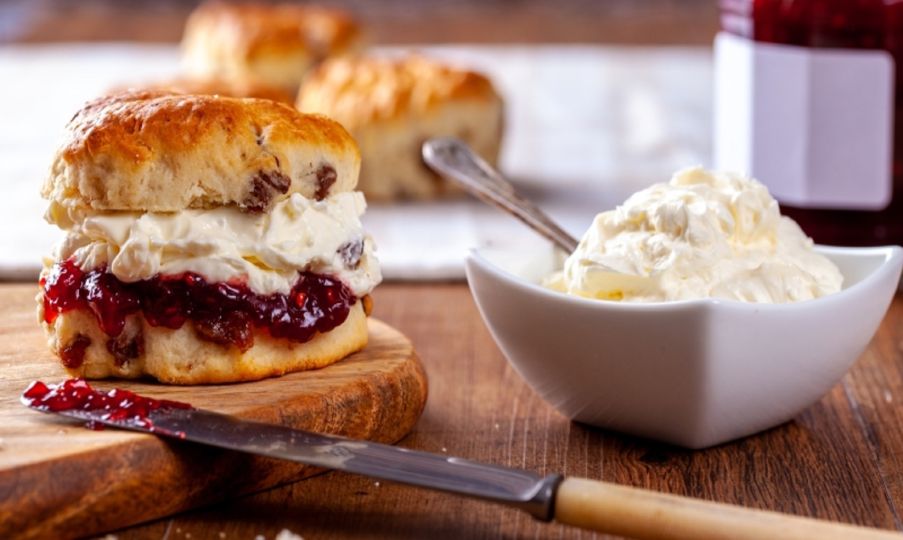
Introducing The OWO Residences by Raffles, Europe’s first Raffles branded residences
Strutt & Parker is delighted to announce that it has been instructed on the sale of The OWO Residences by Raffles, Europe’s first Raffles branded residences.


Summer is just around the corner, and with restrictions easing, there has never been a better time to open our homes and gardens to our nearest and dearest.
A quintessentially British afternoon tea provides the perfect opportunity to entertain friends and family in a pandemic-proof and timely manner. Did we mention National Cream Tea Day on the 25th June?
Join us as we take a closer look at the story behind this long-established ritual, and learn how to grow herbal teas of your own.
Our love affair with afternoon tea began in the early 19th century. Pall Mall had become the first street in the world lit by gas lamps, and the Industrial Revolution was in full swing. Advances in artificial lighting and increasing urbanisation extended the working day and evening mealtimes edged further away from a midday lunch.
By 1840, the seventh Duchess of Bedford, Anna Maria Russell, grew tired of what she called that ‘sinking feeling’ around 5pm. Tea, bread, butter and cake were brought to her room in the late afternoon on her request. As one of Queen Victoria’s ladies in waiting, the Duchess was an influential figure and her craving for comfort food gathered momentum among the well-to-do.
A tradition was born and a new, liberating attitude too. Afternoon teas allowed women to entertain their own guests without their husbands and from the comfort of home. Fashions adapted to the more relaxed surroundings as attendees opted for lighter dresses and flowing fabrics. Gone were the corsets and with them, much of the stifling spirit of the age.
Britain’s relationship with tea itself had started much earlier thanks to the Portuguese wife of King Charles II. Catherine of Braganza moved to England in 1662 and couldn’t live without her favourite hot beverage. It wasn’t long before the import became everyone’s cup of tea in the capital and beyond.
Tea drinking became engrained in English culture and enjoyed by the rich and poor. For high society however, the afternoon tea table provided an opportunity to express their tastes and display their riches. Pouring milk and then hot tea into a cup became a practical matter, to prevent the fine porcelain of the era from shattering from the heat of the water.
Afternoon tea is plagued by big questions. Milk before tea or tea before milk? Scone as in phone or scone as in gone? Perhaps the most contentious of all is how to prepare scones; is it jam before cream or cream before jam?
Her Majesty the Queen prefers jam first, the Cornish method is used at Buckingham Palace garden parties. Could it be anything to do with Prince Charles’s additional title as the Duke of Cornwall? However, not everyone approves. Across the county border in Devon, locals believe that jam should be spread last. The great cream tea debate has divided opinion and the South West for nearly 1,000 years.
National Cream Tea Day on 25th June, is the perfect excuse to learn how to grow herbs from home to create your own tea blend.
The perfect herbs for your DIY brew will depend on individual taste, however there are a few things to bear in mind before you start experimenting.
Mint varieties can produce a harsh flavour, so choose wisely. ‘Black Mitcham’ peppermint grows from summer into autumn and gives a subtle minty taste. Moroccan mint is a sweet alternative and grows in slightly shaded conditions.
Chamomile is another popular choice and generally grows without pest or disease problems. The perennial produces a fragrant tea in the winter months which is said to promote sleep and boost immunity.
There’s no need to find a large plot of land for growing your homegrown tea. In fact, a garden isn’t essential either; a balcony, small plant pot or window box should be sufficient. If space is tight, you could try your hand at vertical farming and growing herbs on a boundary wall to maximise space.
Find a sunny area close to the house and use gritty soil. Herbs need to be well drained to avoid soggy roots, which can lead to bacteria and pests. The savoury and aromatic plants grow equally as well in containers and raised beds as when they are planted on borders.
Pruning the plants will also encourage growth. You should cut leaves and parts of stems regularly to remove disease and insect problems before they spread.
To finish your homegrown tea, pick and wash your herbs before placing them in a teapot or cup. A container with a lid will help to stop essential oils evaporating. Next, pour off-the-boil water over your ingredients and leave to infuse for five to ten minutes. Use a tea strainer to serve and sweeten with honey if needed.